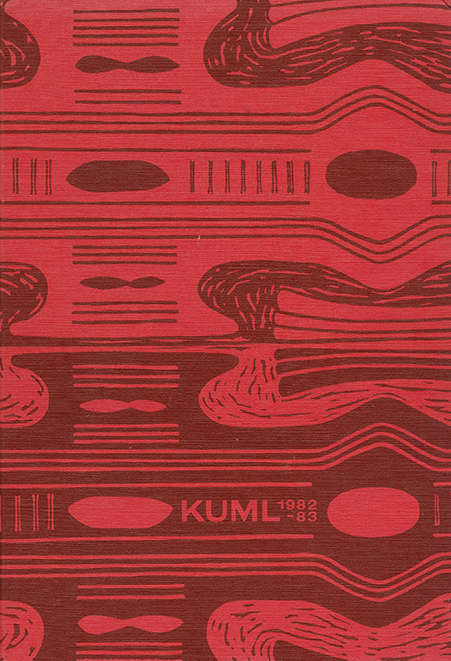Neolithic shaft-tunged battle axes. New light on the Single Grave Culture
DOI:
https://doi.org/10.7146/kuml.v31i31.109137Keywords:
late neolitic, younger neolithic, shaft-tunged battle axe, battle axe, single grave cultureAbstract
Younger Neolithic Shaft-tongued Battle Axes. New Light on the Single Grave Culture
It has become clear during recent years that the Single Grave culture is mainly later than the Funnel Beaker culture and the designation "Younger Neolithic" is now applied to the period between the disappearance of the Funnel Beaker culture and the beginning of the Late Neolithic. A new evaluation of developments in the 3rd' millennium BC is necessary, concentrating on the source material from eastern Denmark in particular.
The shaft-tongued battle axes have been known for a long time. N. Åberg and P. V. Glob dated them to the Early Neolithic. One specimen has, however, been made from the edge fragment of an early Single Grave culture axe, and the shape of the edge corresponds exactly to that of the early Single Grave axes. The shaft-tongued battle axes must therefore be assigned to a period corresponding to the Bottom Grave period in Jutland. The 7 known specimens have, however, all been found outside the Single Grave area, the majority in the Øresund region.
The segregation of the east Danish Younger Neolithic material has hitherto taken Single Grave finds deriving from central and western Jutland as its starting point. Single graves, battle axes, pottery, amber beads and flint axes, made as in west Jutland, have been sought. The result was that Single Grave settlement, on the islands in particular, was described as sporadic. Another method of approach is to make comparison with the Swedish-Norwegian Battle Axe culture in Scania, and look for surface graves and massive and thin-bladed hollow axes. This is not fruitful either, because between central Jutland and Scania there is a special area which might be called "the Baltic district of the Single Grave or Battle Axe culture". This comprises the Danish islands, the eastern part of the Jutland peninsula and the northern part of Mecklenburg. It has its own character, and among other features it is characteristic that both single and surface graves are rare, and for burial, old megalithic graves were mainly employed. Burial furnishing and tool forms also exhibit special features.
Re-assessment of the east Danish source material from the Younger Neolithic period leads to a new description of social conditions in the period.
All three large find categories -grave finds, settlement finds and offering finds- are represented. The grave finds are the most frequent, and re-use of the megalithic graves is the only kind of burial found all over the country. On the islands it is almost universal. In addition we have the central and west Jutland single-graves and the likewise regionally limited types of stone cists. While battle axes and amber beads are among the commonest burial gifts in west Jutland, flint axes dominated in east Denmark, but the regional differences in burial furnishing do not follow the grave forms.
Among the offering finds, single depositions in marshy terrain were probably originally the most frequent kind. They are difficult to perceive, but single depositions of most kinds of implements can be documented. Within this category of find, battle axes dominate in northern Zealand. Multiple depositions are a special group among the offering finds, about 70 being known from Denmark. They consist almost exclusively of flint axes and chisels, both polished and unpolished pieces. Nearly all of them have been found outside the area of the single-graves, in those parts of the country where natural flint is easily accessible below ground. Their distribution and composition suggest that there has been a distribution/communication border between the single-grave area on one side and the rest of the country on the other. Similarly, a number of details seem to show that flint mines were used in the Younger Neolithic too.
Settlement finds are by no means unknown, but very poorly studied. However, regional differences may also be observed in flake implements, determined by the possibility of obtaining good flint. In western Jutland, the flint technique is very poor and even small flakes are used for tools, whereas it is quite different in the late Pitted Ware settlements of the north-eastern littoral.
With the re-evalution of the east Danish material, a new basis is present for discussing the old question of the origin of the Single Grave culture. While the source material from north and east Denmark in a number of aspects shows continuity from Middle to Younger Neolithic (and on to the Late Neolithic), this is not the case in central and western Jutland, where the arrival of the single-graves, and the artefact material deposited in them, marks a strong break with former traditions. This does not necessarily mean that immigration has occurred, and may just as well be due to a radical change in economic strategy.
Therefore a possible model for interpreting the appearance of the Single Grave culture is that it is a question of an expansion, in which the exploitation of the central and west Jutland area is intensified, accompanied by a move into mainly sheep- and cattle-farming. A development in this direction seems already to have started in late Funnel Beaker times, and expecially the then open woodland landscape of west Jutland would have favoured such a strategy. But in central and western Jutland, arable farming is clearly documented, too, in the Younger Neolithic, and probably all the Neolithic groups lived within the framework of a wide-spectrum economy.
Klaus Ebbesen
Oversættelse: Peter Crabb
Downloads
Published
How to Cite
Issue
Section
License
Fra og med årgang 2022 er artikler udgivet i Kuml med en licens fra Creative Commons (CC BY-NC-SA 4.0).
Alle tidligere årgange af tidsskriftet er ikke udgivet med en licens fra Creative Commons.


